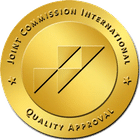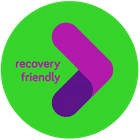President Nixon signed the Controlled Substances Act in 1970, and Congress is constantly applying changes as new dependent drugs evolve. The five types of controlled substances include narcotics, depressants, stimulants, hallucinogens, and anabolic steroids. With all eyes recently on the opioid epidemic, it’s surprising that there isn’t more talk about the dangers of Tramadol addiction.
Tramadol is an opioid medication sold under the pharmaceutical name Ultram and used to treat pain. Many people still don’t think that Tramadol has the potential for abuse or can be addictive because it wasn’t classified as a Schedule IV drug nationwide until 2014. While Tramadol does have a much lower chance of being abused, the rare ways the drug interacts with the brain means it’s crucial to understand its differences from the average opioid. At GateHouse Treatment, we’ve compiled a list of essential facts about the dangers of Tramadol addiction.
1. Tramadol Addiction Symptoms
Like other opioids, Tramadol addiction usually presents the same symptoms of abuse as other prescription painkillers like Oxycontin, Percocet, and Dilaudid. The addiction symptoms can include:
- Constricted (tiny) pupils
- Extreme drowsiness
- Slurred speech
- Nausea or vomiting
- Constipation
- Dry mouth
- Headaches
- Nodding out
- Euphoric moods
- Lack of pain
- Itchiness
Tramadol works in the brain’s opioid receptors. It affects the norepinephrine and serotonin neurotransmitters. Over time, it dulls the body’s natural ability to receive pleasure. Tramadol addiction becomes a problem as users chase a higher amount and combine it with other opioids for a more potent effect. This mixing introduces the added danger of an overdose. Tramadol addiction can also induce seizures when taken in higher doses than prescribed.
2. Tramadol Addiction Withdrawal Symptoms
People who continuously take Tramadol to the point where they develop a dependence will have withdrawal symptoms when they stop taking it. These symptoms are different from opioid withdrawal and feel more like antidepressant withdrawal. They include:
- Nausea
- Diarrhea
- Abdominal cramping
- Sweating
- Anxiety
- Muscular/bone aches and pain
- Restlessness
- Insomnia
- Runny nose
- Watery eyes
- Excessive sneezing
Some of the withdrawal symptoms unique to Tramadol are:
- Severe anxiety
- Confusion
- Delusions
- Paranoia
- Numbness/tingling in limbs
- Hallucinations
- Tinnitus (ringing in the ears)
- Loss of appetite
- Agitation
- Depression
An additional danger of Tramadol comes from its unique effect on the brain. Tramadol is only part opioid; it is also a monoamine reuptake inhibitor (MRI). The effect of this is that it both dulls pain while curtailing the depressant effect of taking an opioid. This double purpose means that Naloxone, the traditional medication for treating an opioid overdose, is less effective at treating a Tramadol overdose.
3. How does Tramadol Addiction work?
Opioid addiction is a severe issue in the United States. With around 49,860 opioid-related deaths in 2019, learning how to help others avoid suffering from substance use disorder with Tramadol is essential.
Anyone who takes opioids like Tramadol has a high risk of developing substance use disorder. A person’s risk factors for developing an addiction might be:
- Family history: Individuals with family members who suffer from substance use disorder are at a higher risk of developing tramadol addiction. This factor accounts for genetics’ influence on addiction and a person’s risk level.
- Trauma: If an individual has a history of trauma or abuse, this factor may influence their risk for tramadol addiction. Some try to self-medicate with substances like Tramadol to block out negative feelings concerning trauma.
- Environment: A critical factor in developing tramadol addiction is the individual’s environment, including having easy access to substances like Tramadol, using Tramadol at an early age, or having an unsteady and unsettled atmosphere.
- Mental health conditions: People with mental health conditions like generalized anxiety disorder, depression, or bipolar disorder may have a higher risk of developing tramadol addiction. People may attempt to self-medicate for these conditions.
These factors can help explain why some people can use substances regularly and not develop an addiction while others do develop substance use disorder.
Tramadol, like other opioids, triggers the brain to release endorphins. Because of these feel-good chemicals, some may experience an overwhelming feeling of positiveness and euphoria. With these good feelings in their brain, some people become addicted to the “high” sensation.
4. How to Know if You or a Loved One is Addicted to Tramadol
There are plenty of ways to learn whether you or a loved one want to seek treatment for Tramadol addiction. Check out the five signs or changes to watch out for with substance use disorder regarding tramadol addiction:
- Psychological: Substances like Tramadol can significantly affect someone’s psychological function. Tramadol can impair a person’s thought process, and the ability to make appropriate judgments is affected. You may notice psychological changes in a loved one or yourself, like how you sleep, mentions of self-harm or suicide, an increase or decrease in confidence, and even hallucinations.
- Physical: Tramadol addiction can also harm a person’s physical health. People often notice various physical signs or symptoms of tramadol use, like small pupils, weight loss or poor coordination.
- Social: Tramadol addiction can affect close relationships as the condition worsens. Negative impacts include isolation from loved ones, violent arguments, missing work or school, and difficulty holding conversations.
GateHouse Treatment and Tramadol Addiction
Tramadol addiction is steadily increasing because of the prolonged use time of the drug. 64% of patients prescribed Tramadol continued taking it after a year. Because of the unique side effects of Tramadol addiction, a relapse can happen quickly. Seeking compassionate, expert help if you struggle with substance abuse is essential.
GateHouse Treatment can help. We don’t treat you as a set of symptoms but holistically as a person deserving of the full opportunities of life. We offer sober homes, outpatient treatment, partial hospitalization programs, and other innovative forms of therapy to help you or your loved one become the best version of themselves.
Pick up the phone and call (855) 448-3588 or contact us through our website. GateHouse Treatment can help you overcome addiction and take positive steps toward sobriety.
- Cymbalta Withdrawal: Causes, Symptoms, And Management - October 12, 2023
- Boredom in Recovery: 5 Tips to Avoid Relapse - October 6, 2023
- Overconfidence and Rehab: Avoiding Relapse - October 4, 2023




